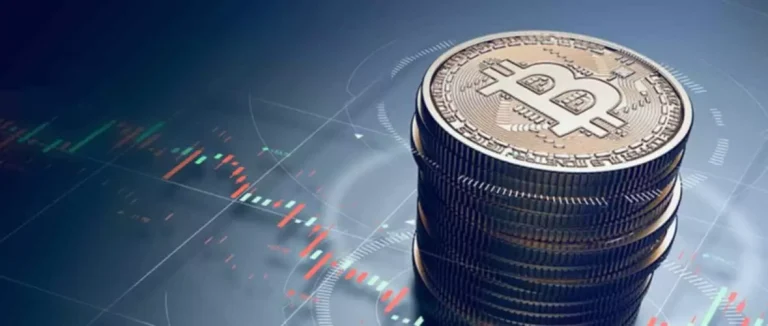Content
The positive relationship between visible fragmentation and liquidity is driven by competition among liquidity providers. Conversely, the negative effect of dark trading is consistent with a “cream-skimming” effect, where dark markets primarily attract uninformed order flow, thereby increasing adverse selection costs on visible markets. The nature of the trading venue determines the overall costs and benefits of venue competition. Visible fragmentation increases aggregated liquidity across all visible trading venues but reduces liquidity in traditional dark pool trading platform markets. This means that the benefits of fragmentation are realized by those who engage in more secretive trading behavior, rather than by investors who send orders exclusively to traditional markets. As discussed, dark pools are sometimes referred to as “dark pools of liquidity,” and are a type of alternative trading system used by large institutional investors to which the investing public does not have access.
Why institutions should care about dark pools
With options Proof of work two and three, the risk of a decline in the period while the investor was waiting to sell the remaining shares was also significant. According to the CFA Institute, non-exchange trading has recently become more popular in the U.S. Estimates show that it accounted for approximately 40% of all U.S. stock trades in 2017 compared with roughly 16% in 2010. The CFA also estimates that dark pools are responsible for 15% of U.S. volume as of 2014. This paper examines the impact of the new regulatory packages on European equity markets by identifying areas where the legislation is effective and comparing these changes in EU legislation with US legislation on dark pools.
The state of Zim Capital Markets!
Most of us are familiar with traditional exchanges, however, trading actually occurs through various venues, each offering unique advantages and challenges. Additionally, SEC regulations generally require ATSs to be operated by FINRA member firms, subjecting them to applicable securities laws and regulations. ATSs are also subject to additional fair access requirements, and those that trade listed securities must submit disclosures regarding the nature of their trading operations via Form ATS-N. The SEC publishes those disclosures, along with a regularly updated list https://www.xcritical.com/ of ATSs, on its website.

Steps involved in dark pool trading:

InsiderFinance provides a powerful platform for intelligently monitoring dark pool activity, giving you the edge you need in the competitive world of options trading. By leveraging InsiderFinance’s comprehensive tools and insights, you can unlock the full potential of dark pool data to make smarter, more informed trading decisions. Furthermore, a report by ITG found that traders who incorporated dark pool insights into their risk management strategies experienced a 15% improvement in their risk-adjusted returns compared to those who relied solely on public market data.
Why Do Institutional Investors Use Dark Pools?
In response to global reforms like the 2010 Dodd-Frank Act in the USA, revising MiFID was necessary since it failed to meet its objectives, specifically regarding market stability and investor safety. As a result, MiFID II and MiFIR were introduced in 2014, significantly overhauling European securities legislation. This is one of the reasons that led to the invention of dark pools (also known as dark liquidity), which are private networks for executing trades. Using dark pools, large institutional traders and investors can buy and sell large chunks of assets without screaming to the world that they are getting in or out of the market, which could lead to attempted front-running.
Strike offers a free trial along with a subscription to help traders and investors make better decisions in the stock market. Dark Pool came into existence when the Securities and Exchange Commission allowed traders to transact huge blocks of shares. Darkpool is used by institutional traders to carry out large trades anonymously, without causing market volatility.
- These internal crossing networks eventually evolved into dark pools that were opened to other institutional investors.
- The purpose of these requirements is to ensure the resilience of trading systems, avoid sending erroneous orders, and provide monitoring entities with information on the activities of algorithmic trading.
- Devaluation has become an increasingly likely risk, and electronic trading platforms are causing prices to respond much more quickly to market pressures.
- This limits the onchain exposure to essential verification elements, enhancing privacy and reducing the likelihood of MEV attacks.
- In addition, fairness concerns dominate recent regulatory actions and are frequently highlighted in the press.
- This document is for informational purposes only and should not be considered legal, business, investment, or tax advice.
Users generate proofs and submit transactions onchain with a smart contract performing the settlement. Although this approach benefits from transparency and simpler implementation, it exposes trade details on the blockchain, making it more susceptible to MEV exploits. Inadvertently facilitating illegal activities can result in severe penalties, loss of reputation, and operational disruptions for institutions.
As dark pools have grown in prominence, they’ve attracted criticism from many directions, and scrutiny from regulators. For instance, the lack of transparency in dark pools and the exclusivity of their clientele makes some investors uneasy. Some even believe that the pools give large investors an unfair advantage over smaller investors, who buy and sell almost exclusively on public exchanges. Dark pools, sometimes referred to as “dark pools of liquidity,” are a type of alternative trading system used by large institutional investors to which the investing public does not have access. The factor of the speed with which a trader can enter and exit from an investment, combined with the transaction costs is what we call liquidity in markets; and providing liquidity is the main objective of exchanges.
It helps to minimize front running and avoid showing where the trader was executing these trades. Dark pools were initially utilized mostly by institutional investors who did not want public exposure to the positions they were moving into, in case there were investors front running. Front running refers to an investor who enters a position into a security before a block trade is completed and can reap the benefits of the subsequent price movement. A dark pool is a financial exchange or hub that is privately organized where trading of financial securities is held. Dark pools are in stark contrast to public financial exchange markets, where there is a high degree of regulation and media attention. Dark pool operators have also been accused of misusing their dark pool data to trade against their other customers or misrepresenting the pools to their clients.
But they have higher fees and commissions, limited proprietary products, less research and analysis, and less personalized service. (2017), “The October 2016 sterling flash episode – when liquidity disappeared from one of the world’s most liquid markets”, Bank of England Staff Working Paper No 687. (2010), “High frequency trading and its impact on market quality”, Kellogg School of Management Working Paper No 66, Northwestern University, Chicago, IL, 20 September. SoFi has no control over the content, products or services offered nor the security or privacy of information transmitted to others via their website. SoFi does not guarantee or endorse the products, information or recommendations provided in any third party website.
The framework emphasizes pre- and post-trade transparency requirements for equity transactions across all platforms (Panagopoulos, 2021). Importantly, MiFID enables conventional exchanges to face competition from other venues across all Member States, thereby reducing barriers to entry for new trading venues. With the ability to compete for volume across a broader range of instruments, new venues have more opportunities to participate in the market.
This approach minimizes onchain data exposure, reducing the information available to MEV bots and thereby lowering the chances of exploitation. Institutions need solutions that ensure privacy without compromising transaction efficiency. Large trades can see significant slippage or delay if a Dark Pool faces liquidity issues. Any perceived transaction inefficiency naturally leads to challenges with adoption. Dark pool data offers a layer of insight that, when combined with technical and fundamental analysis, gives traders a more comprehensive view of the market.
The advantage gained from this information asymmetry to achieve better returns on investments may be challenged on competitive grounds (Clarke, 2014). In addition, because HFT strategies rely on a series of small trades with low latency, their presence on a trading venue can lead to frequent price fluctuations. Such fluctuations can cause prices to change between the time a non-HFT market participant places an order and the time it is executed, increasing uncertainty and risk for investors.
In a dark pool, participants can anonymously submit buy or sell orders without revealing their intentions to the broader market. These orders are hidden from public view and are only visible within the dark pool itself. Regulators’ rules govern areas such as listing requirements, trading procedures, disclosure obligations, and investor protection measures. By adhering to these regulations, exchanges foster investor confidence and maintain the integrity of the marketplace. Investors can access dark pool trading data through various securities information processors, and can be accessed through FINRA’s website as well. Given the nature of dark pools, they attracted criticism from some due to the lack of transparency, and the exclusivity of their clientele.
When an investor submits an order to buy or sell a security, the exchange’s matching engine searches for compatible orders from other market participants. The matching engine evaluates multiple factors, including price, quantity, and order type, to determine the most favorable matches. In the financial world, an exchange refers to a marketplace where various financial instruments, such as stocks, bonds, commodities, derivatives, and currencies, are traded. It serves as a centralized platform that brings together buyers and sellers, facilitating the exchange of these financial assets. Depending on the assets it offers and its region of operation, an exchange might need to get licensed with a regulator.

